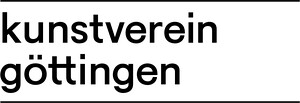Incidents
June 30–August 19, 2018
Ekstase123
August 4–September 16, 2018
Drift and Shift
September 2–October 28, 2018
Gotmarstraße 1
37073 Göttingen
Germany
On the occasion of Kunstverein Göttingen’s 50th anniversary, we hereby announce the summer 2018 season with an extended program of three exhibitions at two different locations, accompanied by talks, workshops and guided tours.
Marina Pinsky: Incidents
June 30–August 19, 2018
Incidents at the Kunstverein Göttingen is the first exhibition to bring together works by Marina Pinsky from the past five years. At the center of the exhibition, is Pinsky’s artistic exploration of temporality: the artist combines historical distinctions, examines the processes of timekeeping, and analyzes the duration of viewing the image as such. The premise for her artistic practice is photography and its imaging techniques—even, or especially, when her works move out of the frame and into space, they acquire sculptural characteristics. Following an intuitive work process, in which she thinks with and through the camera, Pinsky abstracts and layers found and collected imagery and combines them with photographs of their provenance, cityscapes or photographs from her studio. Images are created in which the artist stretches and extends the momentariness of an incident or photograph over time and space. The time that is necessarily spent in order to observe and perceive Pinsky’s works is hence already inscribed in the artistic realization thereof. The complexity of the work refers to the material reality of the image in a digitally shaped present.
Yutie Lee: Ekstase123
August 4–September 16, 2018
For her first solo exhibition, Yutie Lee will produce a new body of work consisting of sculptures, a video installation and an artist book. Lee’s multi-disciplinary practice is inspired by literature, language, and storytelling. For the exhibition titled Ekstase123, she mingles fictional and historical strands from and about writer Ingeborg Bachmann (1926–1973); actress and engineer Hedy Lamarr (1914–2000) and the abbess, composer, philosopher and mystic Hildegard von Bingen (1098–1179). Taking an altered state of consciousness in form of visions or ecstasy as a starting point, Lee addresses the parts of our perception that might be untranslatable and illegible. By emphasizing the subjective perspective of this state, the artist refers to the connection between a mental and physical experience. The artist has created a digital font based on von Bingen’s invention of 23 secret alphabets, litterae ignotae, with an addition of ten stylistically-modified Chinese symbols as numbers. The font HvB lays the basis for a publication that the artist conceived on occasion of her exhibition at Kunstverein Göttingen.
Ayami Awazuhara/Dunja Herzog: Drift and Shift
September 2–October 28, 2018
Newly produced works by artists Ayami Awazuhara and Dunja Herzog will be shown in the exhibition Drift and Shift and offer various perspectives on themes of cultural transfer and appropriation. Awazuhara will develop a group of works that revolve around the element of water and its philosophical meaning, as well as the adaption of its characteristics in sociological circuits. Her research leads her to the role of fountains in shopping malls, which appropriate Italian renaissance urban architecture to a topological study of ubiquitous non-specific places in our everyday life. Awazuhara works across a wide range of media, such as photography, installation, and video, whilst chasing their appearance through storytelling and tracing the processes of embedded translation. The artistic practice of Herzog is characterized by a deeply rooted interest in the effects of colonial histories on personal stories, bodies and materials, which she condenses to mindful and poetic spaces. The artist will present a series of brass objects, which she has produced in collaboration with Phil Omodamwen—a seventh generation bronze caster from Benin City, Nigeria. The pieces on display are part of a long-term project, with the aim of producing a jewelry line made of metal won from e-waste, symbolizing contemporary globalized trading routes. The installation will reach back to the 14th century, linking the German copper export to the production of Manillas—money used for the Atlantic slave trade—and to the well-known Benin Bronzes.
The exhibition program 2018 at Kunstverein Göttingen is curated by Tomke Braun.


